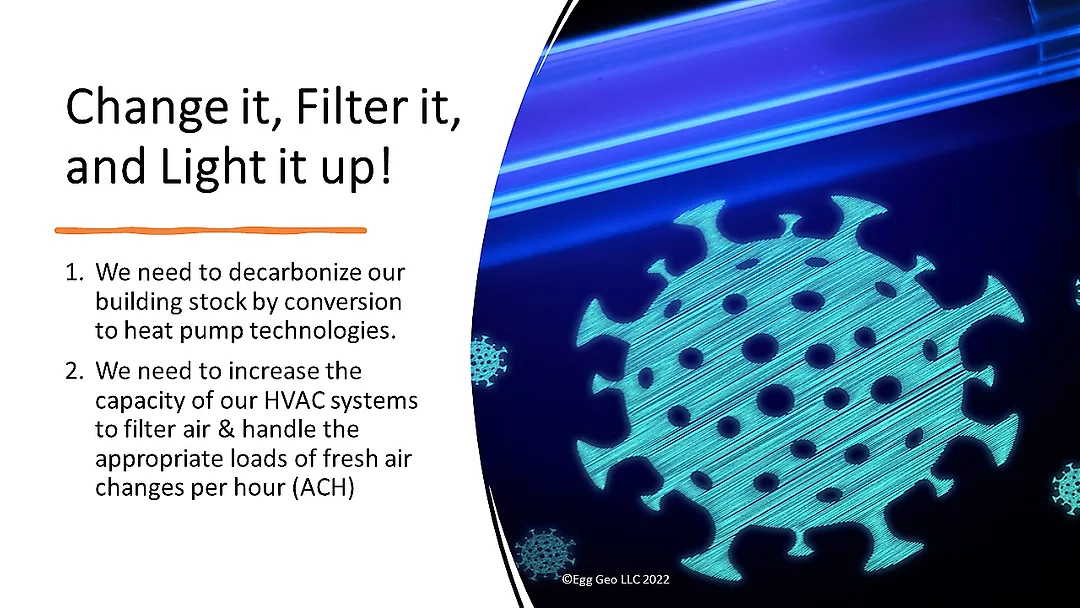Walking through January’s AHR Expo in Las Vegas, countless displays dazzled the eye. The always exciting combination of goliath booths and brand-new exhibitors at the Las Vegas show allowed attendees to see the newest inventions, applications and, in some cases, interpretations of what is on the market in HVACR today.
I've been working on the International Association of Plumbing & Mechanical Officials’ Legionella task groups for the last couple of years. What started a few years ago as an opportunity to help my husband, Jay Egg, fulfill his duties as a Uniform Mechanical Code technical committee member quickly became a full-time job.
We’re engaged with the task group assigned to develop standards and limitations for colony-forming units of Legionella in cooling towers and mechanical systems. We were also assigned to the task group developing the mechanical system standards for the closing and reopening of buildings. This turned out to have much to do with mechanical and plumbing systems.
IAQ Management
During this timeframe, Egg Geo received a contract from the New York State Energy Research and Development Authority to provide an eight-module training course to the State University of New York (SUNY) focused on electrification through the application of heat pump technologies. One caveat: each module was required to have a portion of its content focused on the management of indoor air quality (IAQ) and airborne respiratory illnesses, or a health and safety section.
There is no shortage of opportunities to work in tandem with amazing folks focused on indoor air and water quality and mechanical systems safety. Already a registered nurse, I completed my bachelor’s degree in public health during this time with a focus on environmental health. I also earned American Society of Sanitary Engineering certification as a water management professional.
While IAQ has always been aligned with HVAC systems, the real concern with fresh air changes, in concert with the need for buildings to decarbonize, brings an opportunity to do two very important tasks simultaneously. One, we need to convert our building stock over to heat-pump technologies. Two, we need to increase the capacity of existing buildings to handle the appropriate load of fresh air changes per hour.
Those who work with mechanical systems understand that this often means a significant increase in cooling and heating capacity.
Our efforts with SUNY have been to educate on heat pump technologies and, in concert with that, help them recognize that the new standards post-pandemic require significantly increased fresh air volumes and significantly better air filtration systems. It doesn’t stop there.
Since the COVID-19 pandemic, ultraviolet germicidal irradiation (UVGI) has become a necessity inside buildings and in air distribution systems. Additionally, individual room filtration units are entering the market at an unprecedented pace.
AHR 2022 saw abundant booths and companies dealing with IAQ, air filtration and ultraviolet (UV) treatment. At each row and turn, I ran into products for water testing, air monitoring, air and water monitoring, and cleaning methods for the same. IAQ seems to have taken AHR by storm this year, but is it a fair wind that blew into the Las Vegas Convention Center?
The tech and talk proved limitless — from portable air cleaners and UV-C lighting to the drop ceiling-mountable fan with upper-level UVGI and whisper-quiet technology. To hear the marketing and sales personnel, there was nothing their piece of equipment could not set right with the new IAQ standards. If your room was too high in carbon output, there was a solution. Too low in fresh air? They had just the thing.
From treated filters and adjustable racks to programmable systems with all the monitors, they had all the bells and whistles you could ever want to play with, except one. No one wanted to talk about what to do when the air outside is so bad that bringing it inside is compounding the problem of air quality.
Thermal Energy Networks
Until the issue of decarbonization and beneficial electrification is addressed in a serious manner, the ambient air quality will continue to be a challenge, making IAQ significantly harder to attain. So, for a moment, let us focus on the larger issue at hand.
The expenditure of fossil fuels to heat and generate electricity is known to be hazardous to human existence. Through science, we have come to the place in history when facts tell us that renewable energies are the way to clean up our planet and our future. The change cannot occur overnight, but change must come, even when it is uncomfortable.
Solar, wind, nuclear, hydroelectric, hydrogen and geothermal energy are increasing as more facilities and governments begin to understand the science and importance of renewable energy use. The need for energy will not decrease any time soon; however, the method by which it is provided is crucial. More importantly, how the earth is used as a source of that energy is critical.
This is where beneficial ideas such as thermal energy networks (TENs) come into effect, using the principle of hydronic thermal exchange as a utility for a community, allowing the sharing of heating and cooling to offset peak demands. Geothermal heat pumps can be used effectively in mixed-use communities to share the load of heating from a cooling-dominant commercial building to heating-dominant homes in the winter and back again in the summer.
Electrical consumption is managed perfectly with thermal energy networks. The decreased temperature variation from the groundwater temperature requires much less energy than an air-sourced unit would. If you have doubts, think back to the winter of 2020-2021 and what happened in Texas






